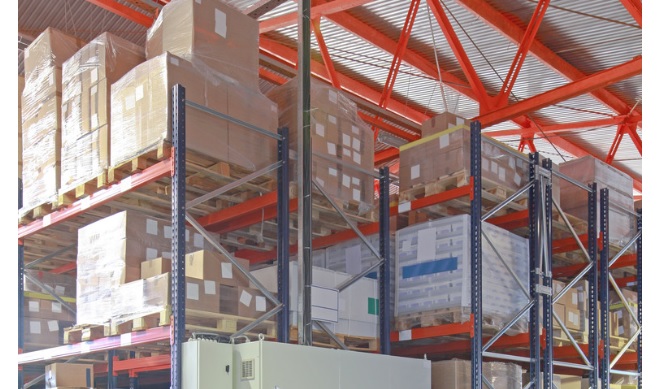
Strategies for Maximizing Warehouse Storage Space
Warehouse storage space for rent has become an integral aspect of modern business operations. Whether you are a small business owner looking to expand your operations or a large corporation in need of seasonal storage solutions, finding the right warehouse space can significantly impact your bottom line. In this comprehensive guide, we will delve into the world of warehouse storage, exploring its diverse aspects, benefits, and strategies for optimizing your storage needs.
The Dynamics of Warehouse Storage Space
Warehousing, once considered a mere storage facility, has evolved into a sophisticated logistical asset. Today, warehouse storage is a dynamic entity, influenced by various factors such as location, capacity, technology, and management. To truly understand its importance, let’s dive into the factors that make warehouse storage space for rent a vital component of modern business.
- Location, Location, Location
The first and foremost consideration when renting warehouse storage space is its location. Proximity to suppliers, customers, and transportation hubs can significantly impact your business operations. A strategically located warehouse reduces transportation costs, shortens delivery times, and enhances overall efficiency.
For instance, if you’re in the e-commerce business, having a warehouse near major population centers allows for quicker order fulfillment, which leads to increased customer satisfaction and potentially higher sales.
- Capacity and Flexibility
The size and capacity of the warehouse space you rent should align with your specific needs. Warehouse storage providers offer a range of options, from small units suitable for startups to vast spaces tailored to the needs of large enterprises.
Flexibility is also key. Seasonal fluctuations in demand or changes in your product line may require you to adapt your storage requirements. Ensure that the warehouse space you rent allows for scalability and customization.
- Technological Advancements
Modern warehouses are equipped with state-of-the-art technology that can streamline operations and improve overall efficiency. Automated systems, including inventory management software and robotics, can help reduce human error, optimize space utilization, and enhance order processing.
Embracing technological advancements can lead to cost savings and improved customer service, making it essential to consider a warehouse’s technological capabilities when making your choice.
- Cost Considerations
Renting warehouse storage space is a significant financial commitment, so cost considerations are paramount. However, it’s important to remember that the cheapest option may not always be the most cost-effective in the long run.
Evaluate the total cost of occupancy, including rent, utilities, maintenance, and any additional services provided by the warehouse. Balancing cost-effectiveness with the quality and convenience of the space is essential for making the right choice.
Strategies for Maximizing Warehouse Storage Efficiency
Now that we’ve explored the key factors to consider when renting warehouse storage space, let’s delve into strategies for maximizing the efficiency of your chosen space:
- Efficient Space Layout
Optimizing the layout of your warehouse space can significantly impact storage efficiency. Utilize shelving, racking systems, and mezzanine floors to make the most of vertical space. Implementing a well-organized layout reduces the time and effort required for order picking and inventory management.
- Inventory Management
Effective inventory management is crucial for minimizing carrying costs and preventing stockouts. Implement inventory control systems that provide real-time tracking of stock levels. This allows you to maintain optimal inventory levels, reducing excess stock and freeing up valuable space.
- Just-In-Time (JIT) Inventory
Implementing a Just-In-Time inventory system can help reduce storage costs and enhance overall efficiency. With JIT, you order and receive inventory only when it’s needed, minimizing excess stock and storage requirements. However, careful planning and reliable suppliers are essential for the success of this approach.
- Employee Training
Invest in employee training to ensure that your warehouse staff is skilled in efficient order picking, packing, and inventory management. Well-trained employees can significantly reduce errors and improve the speed of operations.
- Quality Control
Implement a rigorous quality control process to minimize the storage of defective or damaged goods. Regular inspections and quality checks can prevent wasted space and resources.
- Utilize Technology
Leverage warehouse management software (WMS) to automate various tasks, such as order processing, inventory tracking, and demand forecasting. These systems can help optimize storage space and improve overall efficiency.
Conclusion
Warehouse storage space for rent is a critical component of modern business operations, offering flexibility, convenience, and cost-effective solutions for businesses of all sizes. By carefully considering location, capacity, technology, and cost, you can make informed decisions when choosing warehouse space.
Furthermore, implementing efficient storage strategies, such as space layout optimization, inventory management, JIT inventory, employee training, quality control, and technology utilization, will help you maximize the efficiency of your chosen warehouse storage space.
In a competitive business landscape, the ability to adapt to changing needs and optimize your warehouse operations can give your business a significant advantage. So, take the time to evaluate your options and implement the strategies that align with your goals to make the most of your warehouse storage space for rent.

